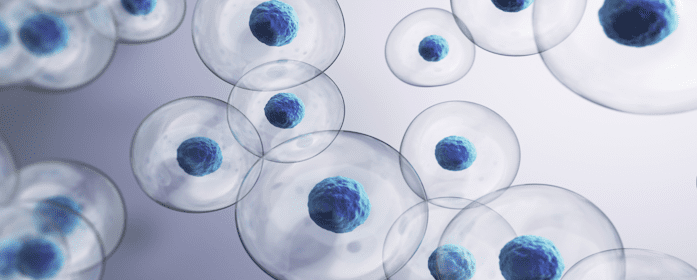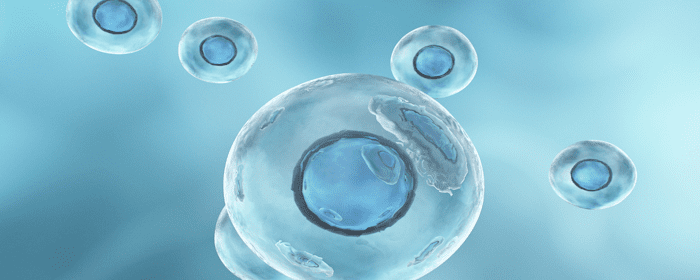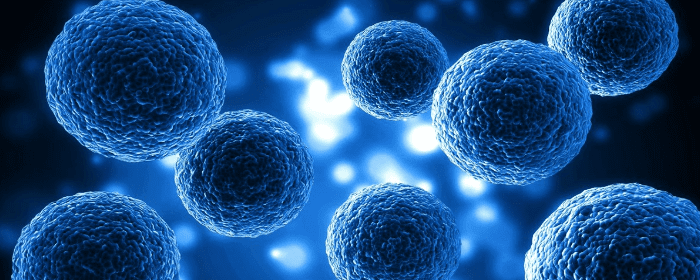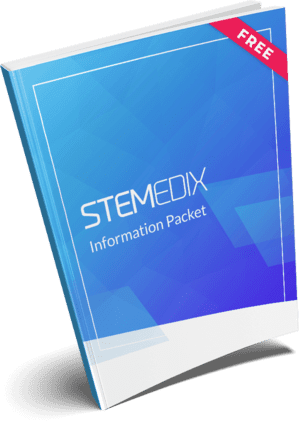
by admin | Feb 20, 2025 | Adipose, Regenerative Medicine, Spinal Cord Injury, Stem Cell Research, Stem Cell Therapy
Spinal cord injuries (SCI) are life-altering conditions with limited treatment options. While rehabilitation and medical management can provide some improvements, regenerative medicine is emerging as a promising alternative. The CELLTOP study, an on-going multidisciplinary phase 1 study conducted at the Mayo Clinic, is investigating the safety and efficacy of adipose tissue–derived mesenchymal stem cells (AD-MSCs) to aid in spinal cord recovery.
In this initial report, Bydon et al. describe the outcome of the study’s first treated patient – a 53-year-old survivor of a surfing accident who sustained a high cervical American Spinal Injury Association Impairment Scale grade A SCI with subsequent neurologic improvement that plateaued within 6 months following injury.
The CELLTOP Trial Stem Cell Treatment Process
Nine months after his injury, the patient enrolled in the CELLTOP study. An abdominal fat tissue sample was collected, and stem cells were isolated, expanded, and preserved. Eleven months after the injury, the patient received an injection of 100 million AD-MSCs through a lumbar puncture at the L3-4 level.
Safety and Tolerability: Minimal Side Effects Observed in Trial
According to the authors, the procedure was well tolerated. The only reported side effect was a mild to moderate headache on the second day, which resolved with over-the-counter medication. No severe adverse effects were observed during the 18-month follow-up.
Observed Neurological Improvements
Following the stem cell injection, the patient showed notable improvements in motor and sensory function over 18 months, including:
- Motor Function: The patient’s upper limb motor scores improved from 35 at baseline to 44 at 18 months. Lower limb motor scores increased from 36 to 49. These improvements were observed in both sides of the body.
- Sensory Function: Sensation, measured through pinprick and light touch scores, nearly doubled. The pinprick score increased from 45 to 95, and the light touch score improved from 54 to 96.
- Upper Extremity Capabilities: The patient’s ability to use his arms and hands improved significantly, particularly in tasks requiring pulling, pushing, and finger dexterity.
- Quality of Life: The patient’s physical and mental health scores improved, as measured by the Patient-Reported Outcomes Measurement Information System (PROMIS) questionnaire.
Observed Improvements in Physical Therapy Performance
Over the 18-month follow-up, the patient also demonstrated significant progress in mobility and strength, including:
- His walking speed improved from 0.17 m/s to 0.43 m/s.
- Walking distance increased from 635 feet in 12.8 minutes to 2200 feet in 34 minutes.
- Shoulder flexibility improved, with greater range of motion in both arms.
- Grip strength and hand dexterity showed notable gains.
How Stem Cells Aid in Spinal Cord Repair
SCI leads to significant nerve damage and scarring that inhibit natural healing. Stem cells offer potential benefits by:
- Reducing Inflammation: AD-MSCs have anti-inflammatory properties that may create a more favorable environment for nerve regeneration.
- Promoting Tissue Repair: These cells can support the growth of new nerve cells and blood vessels, enhancing recovery.
- Enhancing Neuroprotection: Stem cells may help preserve existing nerve function and prevent further deterioration.
Future Prospects of Regenerative Medicine for SCI
While this case study presents promising results, further research is necessary. The CELLTOP study continues to evaluate the effectiveness of stem cell therapy in more patients. Future related studies will explore optimal dosing, timing, and potential combination therapies to enhance recovery further.
Based on these initial results, the authors conclude that regenerative medicine -particularly stem cell therapy – holds significant promise for treating SCI. The first patient in the CELLTOP study demonstrated meaningful neurological improvements, suggesting that AD-MSC therapy could offer new hope for those with SCI. Continued research and clinical trials will determine whether this treatment can become a standard option for spinal cord injury recovery.
Source: Bydon M, Dietz AB, Goncalves S, Moinuddin FM, Alvi MA, Goyal A, Yolcu Y, Hunt CL, Garlanger KL, Del Fabro AS, Reeves RK, Terzic A, Windebank AJ, Qu W. CELLTOP Clinical Trial: First Report From a Phase 1 Trial of Autologous Adipose Tissue-Derived Mesenchymal Stem Cells in the Treatment of Paralysis Due to Traumatic Spinal Cord Injury. Mayo Clin Proc. 2020 Feb;95(2):406-414. doi: 10.1016/j.mayocp.2019.10.008. Epub 2019 Nov 27. PMID: 31785831.

by admin | Feb 11, 2025 | Adipose, Multiple Sclerosis, Stem Cell Research, Stem Cell Therapy
Multiple sclerosis (MS) is a chronic disease that affects the central nervous system, leading to a range of physical and cognitive impairments. There are different types of MS, with the most common being relapsing-remitting MS (RRMS) and secondary progressive MS (SPMS). RRMS is primarily an inflammatory condition, while SPMS involves a progressive decline due to neurodegeneration.
While significant advancements have been made in treating RRMS with new medications that target inflammation, treatment options for SPMS remain limited.
In this study, Fernández et al. aimed to evaluate the safety and feasibility of using adipose-derived mesenchymal stem cells (AdMSCs) in patients with SPMS.
Investigating Stem Cell Therapy for SPMS
Currently, the only approved treatments for SPMS with disease activity are interferon β and mitoxantrone, but their effectiveness is either uncertain or associated with serious side effects. Ocrelizumab has recently been approved for treating PPMS, but effective treatments for SPMS are still lacking.
Recently, stem cells have shown promise in various medical applications, particularly in regenerating damaged tissues and modulating the immune system. Currently, stem cell treatments are approved for conditions like blood disorders and severe burns, but mesenchymal stem cells (MSCs) are still being investigated for other uses.
Fernandez et al.’s study was conducted in two hospitals in Spain and involved a placebo-controlled, randomized trial. Patients were divided into three groups: one receiving a placebo, another receiving a lower dose of stem cells, and the third receiving a higher dose. To ensure unbiased results, the study was triple-blinded, meaning neither the patients, treating physicians, nor the statisticians analyzing the data knew which treatment each patient received.
The study also required participants to provide 30 grams of adipose tissue for stem cell preparation. Once enrolled, patients received their assigned treatment and were monitored for a year with follow-up visits at 30 days, six months, and twelve months after treatment.
Study Results and Safety Evaluation
A total of 34 patients were initially enrolled in the study. However, four patients were excluded before receiving the treatment due to abnormalities in their stem cell samples. The remaining 30 patients completed the study, with 29 undergoing at least one follow-up assessment. Unfortunately, two patients in the placebo group passed away during the trial—neither death was linked to the stem cell treatment.
Throughout the study, 70 adverse events were reported among 22 patients, with the most common being urinary infections, respiratory infections, and anemia. Four serious adverse events occurred, but only one (a urinary infection) was in a patient who received stem cells.
Overall, the authors report that there were no major safety concerns related to the treatment.
Evaluating the Effectiveness of Stem Cell Therapy
To determine whether stem cell therapy had any effect on disease progression, the authors also analyzed various clinical measures, including the Expanded Disability Status Scale (EDSS), MRI scans, and evoked potentials (tests measuring nerve function).
At the end of the 12-month follow-up, no significant differences were found between the placebo and treatment groups in terms of disability progression. The EDSS scores remained relatively stable in all groups, and MRI scans showed no significant reduction in active lesions or brain volume loss compared to placebo.
Fernández et al. report some positive trends in nerve function tests, particularly in visual evoked potentials, which measure the brain’s response to visual stimuli. Some patients in the treatment groups showed improvements in the speed of their nerve signals, suggesting possible stabilization or mild improvement. However, these changes were not statistically significant when compared to the placebo group.
AdMSC Therapy in SPMS: Findings, Challenges, and Future Directions
This study provides valuable insights into the safety of using AdMSCs in SPMS patients. The treatment was well tolerated, with no major safety concerns.
While there were some encouraging trends in nerve function, Fernández et al. call for larger and longer-term studies to determine whether these changes translate into meaningful clinical benefits. Considering this, the authors call for future research focusing on optimizing stem cell delivery methods, exploring combination therapies, and identifying patient subgroups that may benefit the most from stem cell treatments.
Source: Fernández O, Izquierdo G, Fernández V, Leyva L, Reyes V, Guerrero M, et al. (2018) Adipose-derived mesenchymal stem cells (AdMSC) for the treatment of secondary-progressive multiple sclerosis: A triple blinded, placebo controlled, randomized phase I/II safety and feasibility study. PLoS ONE 13(5): e0195891. https://doi.org/10.1371/journal.pone.0195891

by admin | Jan 3, 2025 | Adipose, Mesenchymal Stem Cells, Spinal Cord Injury, Stem Cell Research, Stem Cell Therapy
With over 290,000 people in the United States living with SCI and with roughly 17,000 new cases each year, spinal cord injury (SCI) is a serious condition that significantly impacts the lives of those affected.
Considering the complexity associated with SCI, current treatments for SCI continue to focus mainly on managing symptoms and providing physical rehabilitation. However, recently there has been growing interest in exploring the potential of regenerative medicine, particularly stem cell therapy, for treatment of SCI.
Bydon et al.’s Phase I clinical trial explored the safety of injecting autologous adipose-derived mesenchymal stem cells (AD-MSCs) into the spinal fluid of patients with traumatic spinal cord injury (SCI).
The study successfully manufactured and administered the stem cells to all patients without any serious adverse events (AEs). Although some non-serious AEs, including headache and musculoskeletal pain, were observed, none of the patients were excluded from the study as a result.
At the conclusion of this study, the authors found that several participants showed improvements in sensory and motor functions, as assessed by the American Spinal Injury Association (AIS) impairment scale.
Previous research has indicated that mesenchymal stem cells (MSCs) might aid in neurogenesis, angiogenesis, immune regulation, and neuronal plasticity. AD-MSCs, in particular, are advantageous due to their ability to regenerate nerves and blood vessels, their ease of extraction, and availability.
This study’s findings align with earlier studies, which also reported no serious AEs from intrathecal AD-MSC injections in SCI patients. Similar safety profiles were observed in studies involving other neurodegenerative diseases like amyotrophic lateral sclerosis (ALS) and multiple sclerosis.
Bydon et al.’s reported changes in MRI scans following the stem cell injections as part of this study. Previous studies have reported mixed conclusions on whether these changes are linked to neurological decline. Some suggest that these MRI findings could be due to inflammation from the stem cell treatment, potentially leading to nerve root compression. However, in this study, the authors found that these MRI changes did not correlate with neurological deterioration, indicating that they might be benign reactions.
While some patients showed improvements in their AIS grades, the authors caution that these findings should be carefully interpreted due to the limitations associated with this Phase I trial, including the lack of a control group.
Bydon et al. call for future larger-scale, randomized controlled trials to conclusively determine the benefits of AD-MSC injections. Additionally, they recommend expanding the study to include a broader range of cytokines and immunomodulatory markers to provide a deeper understanding of the stem cells’ mechanisms.
The authors conclude that this trial demonstrated the safety of intrathecal AD-MSC injections in SCI patients, with no serious AEs reported. Seven out of ten patients showed improvements in their AIS grades. These results encourage further research to evaluate the impact of AD-MSCs on neurological outcomes and to explore their potential in aiding late-stage recovery in SCI patients.
Source: Bydon M, Qu W, Moinuddin FM, Hunt CL, Garlanger KL, Reeves RK, Windebank AJ, Zhao KD, Jarrah R, Trammell BC, El Sammak S, Michalopoulos GD, Katsos K, Graepel SP, Seidel-Miller KL, Beck LA, Laughlin RS, Dietz AB. Intrathecal delivery of adipose-derived mesenchymal stem cells in traumatic spinal cord injury: Phase I trial. Nat Commun. 2024 Apr 1;15(1):2201. doi: 10.1038/s41467-024-46259-y. Erratum in: Nat Commun. 2024 Jun 5;15(1):4799. doi: 10.1038/s41467-024-48979-7. PMID: 38561341; PMCID: PMC10984970.

by admin | May 9, 2024 | Adipose, Bone Marrow
Stem cell therapy has been increasingly used as a therapeutic option in the treatment of numerous diseases, including many inflammatory and vascular diseases.
The primary sources of stem cells are bone marrow (BM), dental tissue, adipose tissue, and umbilical cord blood; BM is considered the primary source of multipotent stem cells. While BM is an important source of stem cells for clinical cellular therapy, BM cell culture is an invasive procedure that presents both a potential risk and burden to patients.
Considering this, researchers have conducted numerous studies to investigate adipose tissue as an alternative to BM. Findings indicate that adipose-derived stem cells (ADSCs) can be expanded ex vivo and possess characteristics similar to those found in BM. However, the quality of ADSCs have been found to be affected by age, underlying disease, or the lifestyle of the individual, making these factors a critical factor in estimating the efficacy of stem cell therapy.
The purpose of Park et al.’s study was to explore the association between age and ADSC activity, including paracrine and differentiation potential; the authors hypothesized that age affects the cellular activity of ADSCs.
To verify this hypothesis, Park et al. analyzed the essential functions of ADSCs from young and elderly donors by evaluating the cell proliferation rate, differentiation potential, and cytokine profile.
As a result of this study, the authors reported that age reduces the viability and proliferation rate of ADSCs. Specifically, the viability of ADSCs was significantly reduced in the elderly group when compared to the young group; this reduction also led to an increase in cell population doubling time. This finding led to the conclusion that ADSCs from the elderly may lose their therapeutic efficacy during ex vivo culture.
Paracrine action of ADSCs was also found to be altered by age. The authors observed that as stem cells age, they tend to lose their ability to secrete cytokines or growth factors due to senescence. Considering that transplanted stem cells primarily act through paracrine factors, reduced function resulting from age could be a critical factor in predicting their treatment efficacy after transplantation.
Age was also found to weaken the differentiation potential of ADSCs. Age had previously been proven to influence cell repopulation rate and cytokine secretion. The authors suggest that these findings also indicate that age may disrupt the differentiation potential of ADSCs. After testing this as part of this study, the authors reported that ADSCs from the elderly group do in fact demonstrate a significant reduction in adipogenic potential when compared to the young group.
The authors conclude that this study demonstrated that a donor’s age affects the proliferative activity, paracrine action, and differentiation potential of ADSCs and that further evaluation of ADSC based on age will be helpful for the development of ADSCs as a cellular therapeutic agent in stem cell therapy.
Source: “Age affects the paracrine activity and differentiation potential … – NCBI.” 22 Dec. 2020, https://www.ncbi.nlm.nih.gov/pmc/articles/PMC7789087/.

by admin | Feb 22, 2024 | Spinal Cord Injury, Adipose, Mesenchymal Stem Cells, Stem Cell Research, Stem Cell Therapy
With more than 17,000 people in the US sustaining a spinal cord injury (SCI) each year and an estimated combined cost to healthcare and the workforce exceeding $40 billion, the condition has significant personal and socioeconomic implications. In addition, SCIs have limited pharmacological treatment options to support the regeneration of nerve damage.
Considering the limited treatment options for this condition, the field of regenerative medicine, and specifically the use of stem cells, has recently drawn interest as a potential therapeutic treatment option for paralysis resulting from SCIs.
In this report, Bydon et al. summarize findings of the ongoing multidisciplinary phase 1 clinical trial exploring the safety and efficacy of intrathecal autologous adipose tissue-derived (AD) mesenchymal stem cells (MSCs) in patients with blunt, traumatic SCI.
Specifically, as part of this report, the authors describe the outcome of the first patient with C3-4 SCI treated with AD-MSCs. At the time of SCI, neurologic examination revealed complete loss of motor and sensory function below the level of injury; an injury diagnosed as an American Spinal Injury Association (ASIA) grade A SCI.
After undergoing initial treatment, including C2-6 posterior cervical decompression and fusion, improvement in motor and sensory function was demonstrable. However, neurological gains plateaued 6 months after sustaining injury.
Upon enrollment into the CELLTOP clinical trial 9 months after injury, the patient’s neurologic status was found to be ASIA grade C and imaging revealed bilateral myelomalacia at the C3 level and at the C2-6 decompression and fusion. Additionally, an open biopsy of adipose tissue found in the abdominal wall was performed 8 weeks prior to receiving an initial intrathecal injection.
After receiving an intrathecal injection of 100 million autologous AD-MSCs 11 months after injury, the patient was observed for clinical signs of efficacy at 3, 6, 12, and 18 months following injection.
Bydon et al. observed progressive improvement in upper extremity motor scores and considerable improvement in lower extremity scores at 18 months following injection. The patient also demonstrated consistent improvement in ASIA sensory score, including improvements in pinprick and light touch scores at follow-up after 18 months. The authors reported patient improvements in Capabilities of Upper Extremity score, quality of life (as measured by Global Health Score), and in physical and occupational therapy measures. Other than a moderate headache on day 2, no other safety issues or adverse events were reported.
While further clinical trial is required, the authors conclude that intrathecal AD-MSC administration may be a relatively noninvasive and safe therapeutic option for patients with SCI to improve their neurologic status after reaching a ceiling effect in terms of spontaneous recovery.
Source: “First Report From a Phase 1 Trial of Autologous Adipose Tissue ….” 27 Nov. 2019, https://www.mayoclinicproceedings.org/article/S0025-6196(19)30871-7/fulltext.

by Stemedix | Dec 4, 2023 | Regenerative Medicine, Adipose, Age Management, Stem Cell Research, Stem Cell Therapy
No one wants to grow old. That is apparent from the huge amounts of money people spend on anti-aging products and services each year. These products and services include everything from lotions to more invasive options like plastic surgery.
However, healthier aging is possible without relying on invasive procedures. Stem cell rejuvenation, for example, offers promising results for people searching for ways of going through a healthier aging process.
Intrinsic vs. Extrinsic Aging: What to Know
Intrinsic aging refers to the various traits you inherited, including collagen and elastin production levels, hormonal balance, and more. The thinning lips or particular types of wrinkles you see on your parents, for example, are intrinsic aging traits, and you will likely deal with them as you age, too.
Intrinsic aging doesn’t just refer to visible signs of aging. It also includes the damage that occurs to organs and other body tissues as you get older. How fast an organ deteriorates and how fast tissues regenerate to keep up with the damage all depends on intrinsic aging.
Extrinsic aging refers to the things that you can control about aging. It includes lifestyle choices like smoking, not eating correctly, and so much more.
Both intrinsic and extrinsic factors in aging begin to accumulate, sending messages of aging to the core of stem cells. Thus, everything associated with aging can be seen through the lens of stem cells.
Understanding Stem Cell Rejuvenation
Introducing youthful stem cells into the body can make it easier to rejuvenate existing cells, helping the body age in a healthier way and even offering the chance to reverse some of the effects of aging.
As you age, your cells are not as efficient at replicating as they were when you were younger. This leads to cells getting damaged and dying off. Inefficiency in cell replication leads to aging bodies.
Stem cells are the cells that create specialized cells. They are your body’s building blocks. To combat the natural aging process, stem cells can help regenerate damaged tissue. This is because they can be made into various cell types.
Stem cells can also stimulate the production of growth factors and other molecules that trigger healing mechanisms, helping maintain healthy tissues. Chronic, low-grade inflammation is associated with aging, and stem cells help to reduce inflammation.
They do this by impacting the processes of white blood cells. Macrophages are white blood cells that are integral to the immune system. M1 macrophages can create inflammation, while M2 macrophages reduce it.
Stem cells help transform M1 macrophages into M2 macrophages. This stimulates the process of reducing inflammation.
Another way stem cells help battle against the aging process is by modulating the immune system. They have the potential to maintain a healthy immune system and delay the type of immune dysfunction that comes with age.
Oxidative stress also plays a role in aging. Free radicals damage cells, leading to many of the issues the aging process causes. Stem cells help combat the effects of oxidative stress.
Stem cells also have the potential to affect visible signs of aging. They can increase collagen production, which is vital for maintaining skin flexibility and firmness. As part of the aging process, your collagen production decreases, leading to the formation of fine lines and wrinkles.
The Process of Stem Cell Rejuvenation
Stem cell rejuvenation begins with choosing the right type of stem cells. The main stem cell type used is mesenchymal stem cells.
Mesenchymal stem cells (MSCs) are a type of multipotent stem cell that can differentiate into a variety of cell types. They are typically found in the stromal or connective tissue of various organs and tissues in the body.
MSCs were first identified in the bone marrow, but they can also be isolated from other tissues such as adipose (fat) tissue, and umbilical cord tissue.
MSCs possess immunomodulatory properties, meaning they can regulate the immune system. They can influence the activity of immune cells, such as T cells and macrophages, and have anti-inflammatory effects. This makes them potentially useful for treating conditions with immune system dysregulation.
MSCs exhibit low immunogenicity, meaning they are less likely to provoke an immune response when transplanted into a recipient. This characteristic makes them potentially suitable for allogeneic (from a donor) transplantation.
MSCs have been studied for their potential therapeutic applications in regenerative medicine, tissue engineering, and treatment of various diseases, such as autoimmune disorders, cardiovascular diseases, and musculoskeletal conditions.
If from a patient’s own tissues, the healthcare provider extracts the stem cells and prepares them for injection. They then inject the stem cells into the treatment area to provide relief from inflammation while encouraging your body to start regenerating tissues at the same time.
Because stem cells have the ability to endlessly duplicate themselves, the benefits of stem cell therapy for rejuvenation purposes can only improve over time.
Benefits of Stem Cell Rejuvenation
Stem cell rejuvenation procedures are minimally invasive. They require an extraction of stem cells and then an injection or the introduction of an IV. Other procedures that target aging can be significantly more invasive, leading to long recovery times.
The results continue to improve over time. This is because stem cells will go on to multiply where they were injected, potentially leading to more powerful results.
Stem cell rejuvenation can target the aging process at the cellular level, helping reduce inflammation and prevent oxidative stress. Stem cells may lead to an increase in collagen production as well, which helps combat fine lines and wrinkles.
Choosing Regenerative Medicine
Anti-aging solutions don’t have to involve invasive procedures or the reliance on options that take a very long time to work. Regenerative medicine treatments like stem cell therapy offer the chance to tackle the causes of aging at the cellular level.
Stem cells can offer anti-inflammatory results while also targeting free radicals and helping repair damaged tissues as well as damaged stem cells. By turning to regenerative medicine options, you have the chance to find rejuvenation solutions that can work.







 St. Petersburg, Florida
St. Petersburg, Florida
